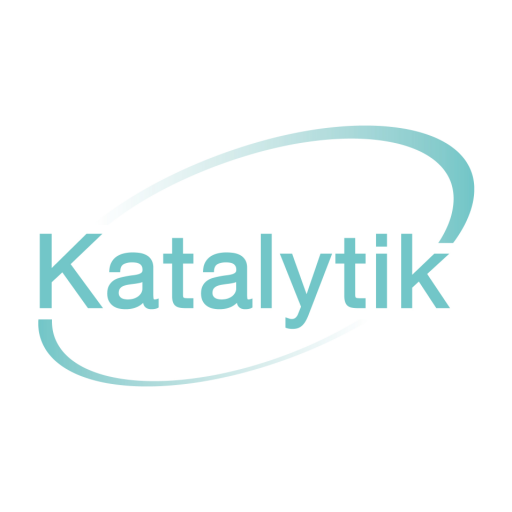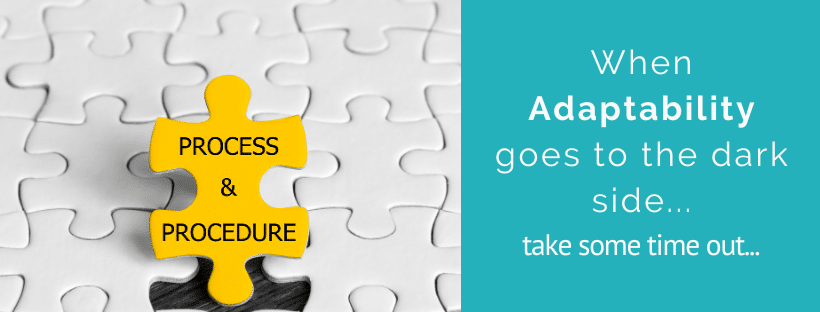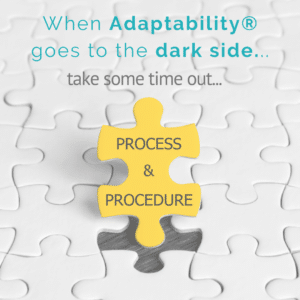How your CliftonStrength Belief hinders you
Being able to notice how your Belief shows up means you maximise your potential to harness its power.
The Belief theme in CliftonStrengths, one of the 34 themes identified by Gallup, is characterized by individuals who have core values that are deeply held and unchanging. People with Belief are driven by these values, which provide them with direction, purpose, and meaning. They are passionate about their causes and are often seen as steadfast and reliable. While this strength can lead to tremendous dedication and a strong sense of mission, it is not without its potential blind spots. Understanding these blind spots can help individuals leverage their Belief talent more effectively while avoiding common pitfalls.
And for ideas how your Belief might come across to others, and what you can do about it, read our whitepaper on conflict and communication, it contains a table of all 34 CliftonStrengths.
Understanding Belief ® as a strength
Someone with Belief as a top theme has a strong set of core values that define their decisions and actions. They have a strong sense of purpose and direction. Often described as dependable and trustworthy they ere mission-oriented and inspire others with their passion and conviction.
Common blindspots of Belief hinders progress
The Belief theme in CliftonStrengths is a powerful driver of purpose and mission. However, like all strengths, it comes with potential blind spots that can limit effectiveness if left unchecked. By acknowledging and addressing these blind spots: rigidity in thinking, potential for conflict, resistance to change, overemphasis on values, difficulty in prioritizing, and risk of alienation—individuals with the Belief theme can harness their strengths more fully and constructively. Balancing passion with flexibility, empathy, and practicality can lead to a more harmonious and productive application of their deeply held values, ultimately benefiting themselves, their teams, and the broader causes they champion.
1. Rigidity in Thinking
One of the most significant blind spots associated with the Belief theme is rigidity. Individuals with strong Belief may find it challenging to be flexible or open to different perspectives. This can lead to a perception of inflexibility or stubbornness, especially in environments that require adaptability and innovation. While it is essential to hold true to one’s values, there are times when compromising or considering alternative viewpoints is necessary for collaborative success.
Mitigation Strategy: To mitigate this, individuals with Belief should practice active listening and seek to understand opposing views without immediately dismissing them. Engaging in open-ended questions and considering the merits of alternative approaches can help in balancing conviction with flexibility.
2. Potential for Conflict
Belief-driven individuals are passionate about their causes and values, which can sometimes lead to conflicts with others who do not share the same views. This passion, while admirable, can be perceived as overbearing or confrontational. In a team setting, this can create friction and hinder collaboration.
Mitigation Strategy: Recognizing the importance of empathy and emotional intelligence is crucial. By understanding and respecting the values and beliefs of others, individuals with the Belief theme can foster a more inclusive and harmonious environment. Effective communication and conflict resolution skills can also be beneficial in navigating disagreements constructively.
3. Resistance to Change
People with the Belief theme often have a strong attachment to their values and the causes they support. This attachment can translate into resistance to change, particularly if the change seems to threaten their core beliefs. In a rapidly evolving world, this resistance can be a significant obstacle.
Mitigation Strategy: Embracing a growth mindset can help. By viewing change as an opportunity for growth rather than a threat, individuals with Belief can learn to adapt while still honouring their core values. It is also helpful to focus on how new changes or initiatives can align with and support their fundamental beliefs.
4. Overemphasis on Values
While having strong values is a hallmark of the Belief theme, there can be a tendency to overemphasize values at the expense of other critical factors such as efficiency, practicality, or profitability. This overemphasis can sometimes result in decisions that are not balanced or sustainable.
Mitigation Strategy: Striving for balance is key. Individuals with the Belief theme should work on integrating their values with practical considerations. Seeking input from others who have strengths in areas like Strategic, Analytical, or Maximizer can provide a more rounded perspective, ensuring that decisions are both value-driven and effective.
5. Difficulty in Prioritizing
The passion and commitment associated with the Belief theme can sometimes lead to taking on too many causes or initiatives simultaneously. This can result in burnout or diluted efforts, where none of the causes receive the full attention they deserve.
Mitigation Strategy: Prioritization is essential. Learning to focus on a few key initiatives that align most closely with one’s core values can lead to more impactful and sustainable efforts. Techniques such as goal setting and time management can aid in maintaining focus and energy on the most important causes.
6. Risk of Alienation
Belief-driven individuals can sometimes alienate others who do not share the same level of passion or who may have different priorities. This risk is particularly pronounced in diverse teams or organizations where multiple values and beliefs are represented.
Mitigation Strategy: Inclusivity and respect for diversity are paramount. Individuals with the Belief theme should strive to create environments where all voices are heard and respected. Celebrating differences and finding common ground can help in building stronger, more cohesive teams.
Pairing the Belief theme with other CliftonStrengths themes can create powerful partnerships that mitigate the potential blind spots and enhance overall effectiveness. Here are some strengths that make great partners for individuals with the Belief theme:
1. Adaptability
Why It’s a Good Partner:
Individuals with Adaptability excel in flexibility and going with the flow. They can help balance the rigidity sometimes seen in those with the Belief theme by introducing a more open and responsive approach to change and unforeseen circumstances.
How It Helps:
Adaptability can complement Belief by helping individuals stay grounded and present, allowing for a more agile response to changing environments without compromising core values.
2. Harmony
Why It’s a Good Partner:
Harmony focuses on finding consensus and reducing conflict. This strength can help Belief individuals navigate potential conflicts by emphasizing common ground and fostering collaborative environments.
How It Helps:
Harmony can mitigate the risk of conflict by promoting peaceful resolution and understanding, making it easier for Belief-driven individuals to work effectively in diverse teams.
3. Strategic
Why It’s a Good Partner:
Strategic thinkers excel at spotting relevant patterns and issues and developing clear plans to navigate complex situations. They can help individuals with the Belief theme make informed decisions that align with their values while also considering practical implications.
How It Helps:
The Strategic theme provides a forward-looking perspective that helps balance passion with practicality, ensuring that decisions are both visionary and feasible.
4. Analytical
Why It’s a Good Partner:
Analytical individuals focus on understanding the factors that affect a situation. They bring a data-driven approach that can help ground the sometimes idealistic nature of the Belief theme in facts and logic.
How It Helps:
Analytical partners help ensure that decisions are well-supported by evidence and can highlight any potential oversights, leading to more balanced and sustainable outcomes.
5. Woo (Winning Others Over)
Why It’s a Good Partner:
Woo is all about connecting with others and building relationships. This strength can help individuals with Belief expand their influence and gather support for their causes by creating strong interpersonal connections.
How It Helps:
Woo partners can bridge gaps between Belief-driven individuals and others who may not initially share their passion, helping to build a broad base of support and fostering more inclusive environments.
6. Maximizer
Why It’s a Good Partner:
Maximizers focus on strengths and strive for excellence. They can help Belief individuals refine their approach, ensuring that their efforts are not just passionate but also highly effective and impactful.
How It Helps:
The Maximizer theme helps individuals with Belief achieve greater impact by focusing on what works best and seeking continuous improvement, thus enhancing the overall quality and effectiveness of their initiatives.
7. Empathy
Why It’s a Good Partner:
Empathy involves understanding and sharing the feelings of others. This strength can help individuals with Belief tune into the emotional needs and perspectives of those around them, fostering deeper connections and mutual respect.
How It Helps:
Empathy partners can help mitigate the risk of alienation by ensuring that the emotional and relational aspects of interactions are considered, leading to more harmonious and supportive environments.
8. Connectedness
Why It’s a Good Partner:
Connectedness is about seeing the bigger picture and understanding how different elements are interconnected. This strength can complement Belief by providing a broader perspective on how their values and causes fit into the larger scheme of things.
How It Helps:
Connectedness helps individuals with Belief see the interconnectedness of their actions and values, promoting a more holistic and inclusive approach to their mission and goals.
9. Positivity
Why It’s a Good Partner:
Positivity brings an upbeat and optimistic attitude. This strength can help Belief individuals maintain morale and motivation, especially during challenging times.
How It Helps:
Positivity partners can provide the encouragement and positive reinforcement needed to sustain long-term efforts, ensuring that Belief-driven initiatives remain energized and forward-looking.
10. Learner
Why It’s a Good Partner:
Learners are driven by a desire to continuously improve and grow. This strength can help individuals with Belief remain open to new information and perspectives, promoting ongoing personal and professional development.
How It Helps:
Learner partners encourage a mindset of growth and curiosity, helping individuals with Belief stay adaptable and informed, thereby enhancing their ability to navigate complex and changing environments.
Being aware of your blindspots can mean your Belief works for you
By pairing the Belief theme with complementary strengths, from a partner, or noticing how you own top themes interact with it, you can create powerful partnerships that mitigate blind spots and enhance their overall effectiveness. Thiscreates a balanced approach, blending your strong values with flexibility, empathy, and strategic insight. Embracing these synergistic combinations allows your Belief theme to maximize its potential and help you navigate your mission with greater success and fulfilment.







